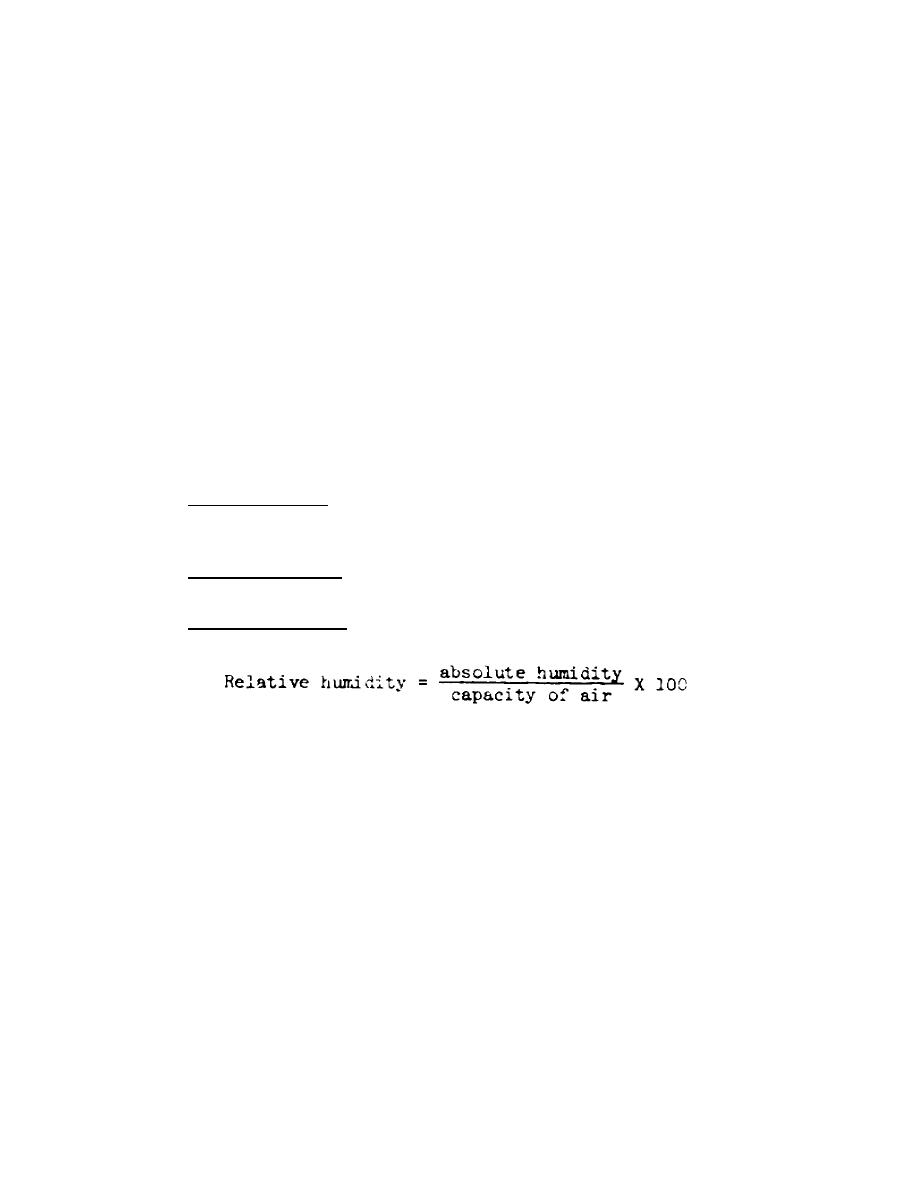
SM0486
temperatures of the two sources are proportionate.
Because of the proportionate
relationships, the pyrometer is a direct reading instrument.
(c) Now that you have completed the material on the effects and
measurement of heat and temperature, let's proceed to the study of humidity to see
how it is related to temperature and heat and how it is measured.
7.
HUMIDITY
a. Humidity is nothing more than water vapor, and there is always some water
vapor in the air. The term "humidity" is used to describe the amount of water in
the air. However, the amount of water vapor may differ from place to place. It
will vary in a given location depending on the temperature, wind, rainfall, and
other weather factors.
Before we discuss the instruments used in measuring
humidity, let's look a little closer at the nature of humidity.
b. The Nature of Humidity.
There are two types of humidity measurements
usually associated with the measurements of the moisture content in the air. They
are relative humidity and absolute humidity. Both express the amount of moisture
content in the air, but in different forms.
Let's define these and other common
terms that are associated with humidity.
(1) Capacity of Air - Capacity of air is the amount of moisture which the
air can hold when it is saturated.
Capacity usually is measured in grains per
cubic foot (gr/ft3). The capacity increases with an increase in temperature.
(2) Absolute Humidity - Absolute humidity is the amount of water vapor in a
cubic foot of air at any given time.
(3) Relative Humidity - Relative humidity of the air is defined as the
ratio of the amount of moisture which the air actually contains to its capacity.
EXAMPLE: When a quart bottle contains one pint of a liquid, it is 50 percent full.
If a cubic foot of air that could hold four grains of water vapor holds only two
grains of water vapor, it is 50 percent full or half saturated.
Such air has a
relative humidity of 50 percent.
(a) Another term commonly used in relative humidity is vapor pressure,
or partial vapor pressure. Vapor or partial vapor pressure is the number of pounds
per square inch of the atmospheric pressure which consists of water vapor. Partial
vapor pressure cannot be greater than the saturation value of the air at any given
temperature.
For all practical purposes, it is the percentage of water vapor
relative to the saturation value of a given volume of air at a given temperature.
in other words,
29



 Previous Page
Previous Page
